Novelisations
Mikasa, Japan
Compiled by Martin Willey
Mikasa Novels published three novels based on Year 2, translated from the Michael Butterworth titles. Overview
Mikasa Novels 15 July 1977. 230 pages.
0297-007008-8001
Translated by Masao Mitani from The Space Jackers (Does not include The Exiles)
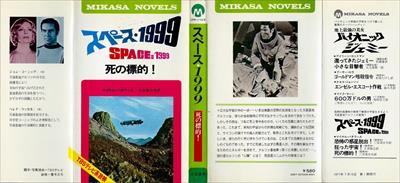
These books use the traditional Japanese orientation, reading from right to left, with the spine on the right. Each book starts with a six pages of introduction and photos, shown here.
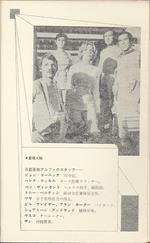
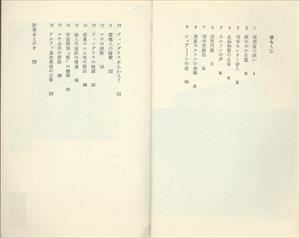
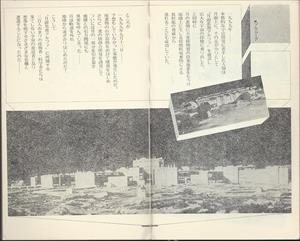
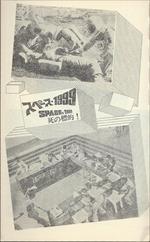
1999
Mankind has accomplished full-scale development on the Moon, constructing "Moonbase Alpha", and is embarking on a vast exploration of the universe.
At the same time, mankind has succeeded in avoiding the radioactivity caused by the nuclear fuel waste on the Earth by creating a dumping zone for the unnecessary nuclear material on the back side of the Moon.
However September 13, 1999
An unexpected situation occurs. A mountain of waste heats up to a high temperature and explodes, inducing a further series of nuclear-powered explosions, finally tearing the Moon from the gravitational influence of the Earth --- The Moon is thrown out of orbit and begins to move away from the Earth!
And now "Moonbase Alpha", with its three hundred plus engineers and technicians�Scientists who will encounter unimaginable dangers while on an endless journey of the universe...
Moonbase Alpha staff
This book is a translation of a paperback "SPACE 1999: THE SPACE JACKERS", published by W.H. Allen. It is based on "Space 1999", which is a popular SF drama that is currently being broadcast on US television stations. It is a novel by the author Michael Butterworth. As for the timing of this novel, its story is a year or two after "Escape the Planet of Terror!".
With John Koenig as the commander, the more than 300 members of Moonbase Alpha are still isolated and in search of a planet for a better life, and for the mineral Tiranium, which is essential for their life support system. But what's interesting in this setting are the aliens and monsters that arrive at the Alpha base.
Even in this "Target of Death!", you can't miss the space opera - a phantom who transforms into Koenig, an immortal alien seeking their world, a strange monster that is "reminiscent of a giant Brontosaurus", with an eight-legged scaled body and crab-like pincers on its shoulders, and manipulated by a mysterious cloud. This monster has an odd chicken comb on its head, resembles a lizard, and has sharp claw-like talons and webs on its hands.
For another publisher I have translated several volumes of of W. Link and R. Levinson's "Criminal Columbo", where the criminals who challenge Colombo span a wide variety of people such as secretaries, architects, art critics, scientists, military personnel, surgeons, etc., who all thoughtfully execute their murders to ensure that they have iron-clad alibis. Perhaps the Colombo writing staff are struggling to continually create new and unique criminals, but certainly the staff at Space 1999 must be enthusiastic about creating ever more shocking aliens and monsters.
Speaking of space monsters, in the old days there was a three-necked gorilla that appeared in Barnes'sUS pulp author Arthur K. Barnes (1909-1969) created his heroine Gerry Carlyle in 1937; the stories were collected as Interplanetary Huntress in 1956 "Catch'em Alive Carlyle", and a horse with a mouth as large as a tunnel. I can remember the hero created by BurroughsUS author Edgar Rice Burroughs (1875-1950) began his John Carter on Mars stories in 1912, John Carter, and his encounters with five-meter tall green giants. The space monsters in "Space 1999" are not the least bit inferior to them, and are all unique, grotesque, and powerful.
This is something I thought about while translating. Ken KuronumaKen Kuronuma (1902-1985) was a science fiction and mystery writer, best known for writing the 1956 Toho film Giant Monster of the Sky: Rodan and the 1960 TV series Undersea Man 8823, who is known for researching strange phenomena around the world, wrote the following.
When he was a child, he often saw pictures of the Loch Ness monster in manga magazines and elsewhere, and believed that there really was a monster living at the bottom of the lake. However, once he became a junior high school student after elementary school, he gradually came to the realization that the Loch Ness monster was a ridiculous myth. However, as the years went by, the topic of monsters lurking in Loch Ness continued to attract the world's attention, and it is a well-known fact that a survey team of British Navy submarines was dispatched in recent years as the number of witnesses has increased.
Kuronuma's childhood is probably around the end of the Meiji Era1868-1912, when Japan transformed from an isolated feudal nation to a modern industrial state. What once was a mangaManga are Japanese comics, derived from late 18th century picture books; manga publishing expanded rapidly from 1905 in those days is now a reality. There is also a great possibility that the monsters and aliens that appear in this book could actually exist somewhere out in the vast universe. It can be seen from the fact that most of the works of Unno JuzaUnno (1897-1949) was one of the "founding fathers" of science fiction in Japan, mostly active in the 1930s, which were only simple science fiction novels before the war, now that I read them in reprint, I can see that most of them have become reality.
Anyway, science fiction, and not just in this book, gives us endless imagination and dreams. Lastly, I would like to thank Mr. Hisako Inomata and Mr. Narutoshi Maehara of the editorial department of Mikasa Shobo in various ways for the release of this publication and to express my gratitude here in the afterword.
Masao Mitani
Thanks to Patrick Zimmerman